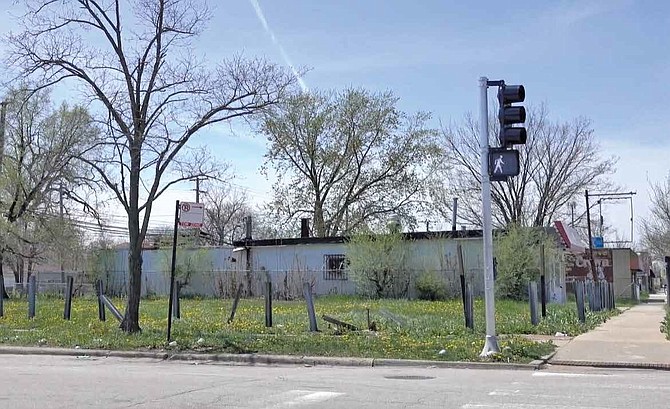Study On Vacant Lots Near Transit Shows Opportunities For Development
Study On Vacant Lots Near Transit Shows Opportunities For Development
By Tia Carol Jones
A new study, done by Elevated Chicago and the Institute for Housing Studies at DePaul University shows the impact of vacant lots near transit in communities of color.
Elevated Chicago is a collaborative that advocates for racial equity, health, climate, and art and culture. One of the things the collaborative has been working on is expanding the ideas around equitable transit-oriented development. The Institute for Housing Studies at DePaul University’s mission is to provide data and do research that will inform housing policies in Chicago and across the country.
The goal of the study was to highlight the implications high concentrations of vacant land near train stations on the South and West sides has for the quality of life and the ability to access transit in those neighborhoods. Two train stations were used as part of the case study, The Kedzie Green Line Station on the city’s West side and 95th Street Red Line Station on the city’s South side.
Geoff Smith, Executive Director of the Institute for Housing Studies, said the two stations were chosen because there were existing relationships with groups that were active around them. Elevated Chicago and Garfield Park Community Council have been working together for a number of years on strategies to attract investments around the Kedzie Green Line. Similarly, Elevated Chicago and the Endeleo Institute have been doing work on the commercial corridor. In 2023, the Federal Transit Authority committed $2 Billion to the Red Line Extension project.
“From hearing some of the perspectives from folks in the neighborhood and Endeleo they want to more fully leverage that significant public investment to attract new stores and new housing to fill in some of that vacant land,” Smith said.
The study found that 90% of the city-owned vacant lots, within half a mile of a train station, are in a neighborhood that is 80% or more African American. Smith said, that finding can signal disinvestment and lack of investment in areas around transit in those communities. More forward looking, Smith said, it can highlight potential opportunities to leverage city policies to attract new investments to redevelop these lots.
The study was also an opportunity to find out from people in the neighborhoods what they wanted to see done with those vacant lots.
Hubert Morgan, of Endeleo Institute, said significant investments have been made in the 95th Street corridor, from the Red Line to the Metra Station, and more are coming. There was a concerted effort to do comprehensive planning to re-invent 95th street.
“We feel that the inventorying of vacant land by community residents was an empowering move to be able to have residents understand that vacant properties can have cumulative positive effects in terms of what do you do with vacant land,” Morgan said. He added, that vacant land doesn’t always have to urbanized and built on, it can be something that strengthens the neighborhood. Some of those things include gardens, parks and recreational spaces.
What Endeleo Institute found from its work on the study was that even with the vacant lots in the community, there was a sense of civic pride, with people keeping up the vacant lots. While vacant lots can be the site of dumping items, Endeleo found quite a few vacant lots were acquired by the houses next door and did the upkeep. Also, there weren’t as many vacant lots as first believed.
Smith said there is an opportunity for the city to help remove obstacles so that residents and small scale developers can access the city-owned vacant lots, so they can repurpose it. The residents believe it can happen with better dialogue and relationships between the city and the residents.
“From a real estate perspective, transit proximity has historically been considered a significant amenity and when you look at it, developers typically pay a premium to find land near transit,” Smith said.
For more information about the study, visit https://tinyurl.com/m3wx5sws.
Latest Stories
- Giannoulias Awarding $13 Million in Grants to Chicago Area Libraries
- The Messi Experience Officially Launches in Chicago
- WNBA's Chicago Sky Announces First-of-Its-Kind Partnership with Moonshot to Protect Players from Online Threats and Abuse
- YWCA METROPOLITAN CHICAGO HONORS FOUR OUTSTANDING LEADERS AT 2025 COMMUNITY CHAMPION AWARDS
- Governor Pritzker Announces 36 Awards Through Tourism Grant Programs
Latest Podcast
STARR Community Services International, Inc.

